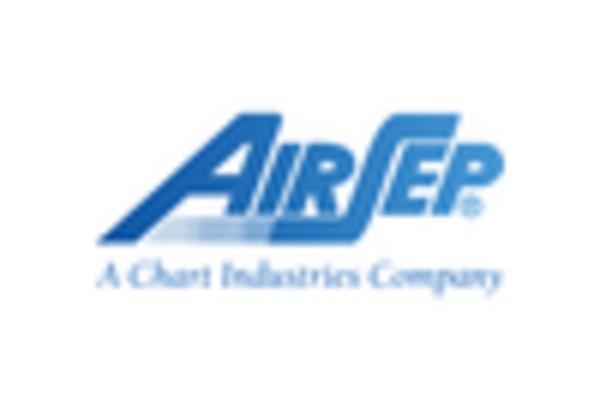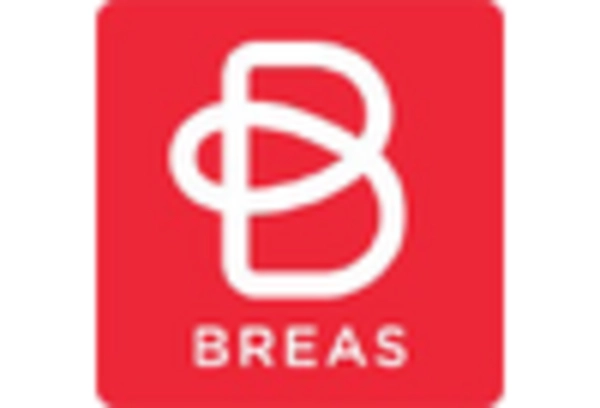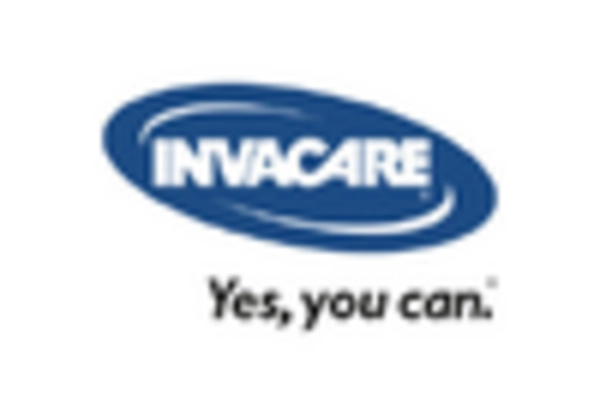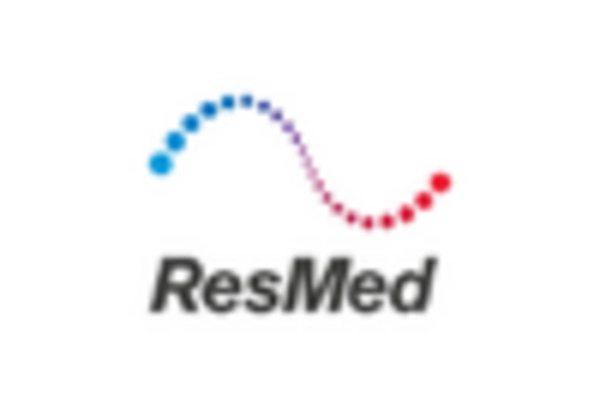Government Initiatives and Funding
Government initiatives aimed at improving healthcare access and funding for respiratory care are pivotal for the oxygen therapy-equipment market. In Japan, the government has implemented various programs to enhance the quality of life for patients with chronic respiratory conditions. These initiatives often include subsidies for medical equipment, making oxygen therapy more accessible to those in need. Additionally, public health campaigns focused on raising awareness about respiratory diseases and the importance of oxygen therapy are likely to drive market growth. The financial support provided by the government can significantly reduce the burden of costs associated with oxygen therapy equipment, thereby encouraging more patients to seek treatment. As a result, the oxygen therapy-equipment market is expected to benefit from these supportive measures, leading to increased adoption and utilization of therapeutic devices.
Growing Awareness of Home Healthcare
The rising awareness and acceptance of home healthcare solutions are transforming the landscape of the oxygen therapy-equipment market. Patients and caregivers are increasingly recognizing the benefits of receiving treatment in the comfort of their homes, which is particularly relevant for those with chronic respiratory conditions. This shift is likely to drive demand for portable and user-friendly oxygen therapy devices that can be easily integrated into home settings. Moreover, the trend towards home healthcare is supported by advancements in telemedicine, allowing healthcare professionals to monitor patients remotely. As a result, the oxygen therapy-equipment market is expected to expand, as more individuals opt for home-based therapies that offer convenience and flexibility in managing their health.
Technological Innovations in Equipment
Technological advancements in the design and functionality of oxygen therapy equipment are significantly influencing the market in Japan. Innovations such as portable oxygen concentrators and advanced delivery systems are enhancing patient convenience and compliance. These devices are becoming increasingly user-friendly, allowing patients to manage their therapy more effectively at home or on the go. The introduction of smart technology, including mobile applications that monitor oxygen levels and usage, is also gaining traction. This trend is likely to attract a broader consumer base, as patients seek more efficient and adaptable solutions for their oxygen therapy needs. Consequently, the oxygen therapy-equipment market is poised for growth, as manufacturers continue to invest in research and development to create cutting-edge products that meet the evolving demands of healthcare providers and patients alike.
Rising Prevalence of Respiratory Disorders
The increasing incidence of respiratory disorders in Japan is a crucial driver for the oxygen therapy-equipment market. Conditions such as chronic obstructive pulmonary disease (COPD) and asthma are becoming more prevalent, affecting a significant portion of the population. According to recent health statistics, approximately 5.5 million individuals in Japan are diagnosed with COPD, which necessitates the use of oxygen therapy. This growing patient base is likely to propel demand for oxygen therapy equipment, as healthcare providers seek effective solutions to manage these chronic conditions. Furthermore, the aging population, which is more susceptible to respiratory ailments, further amplifies this trend. As a result, the oxygen therapy-equipment market is expected to experience substantial growth, driven by the need for innovative and efficient therapeutic devices to cater to this demographic.
Increased Investment in Healthcare Infrastructure
The ongoing investment in healthcare infrastructure in Japan is a significant driver for the oxygen therapy-equipment market. The government and private sector are focusing on enhancing healthcare facilities, which includes upgrading equipment and technology for respiratory care. This investment is likely to lead to improved access to oxygen therapy services, particularly in rural and underserved areas. Enhanced healthcare infrastructure can facilitate better patient outcomes by ensuring that individuals have access to the necessary therapeutic devices. Furthermore, as hospitals and clinics modernize their facilities, the demand for advanced oxygen therapy equipment is expected to rise. Consequently, the oxygen therapy-equipment market is poised for growth, driven by these infrastructural improvements that aim to provide comprehensive care for patients with respiratory conditions.

















Leave a Comment